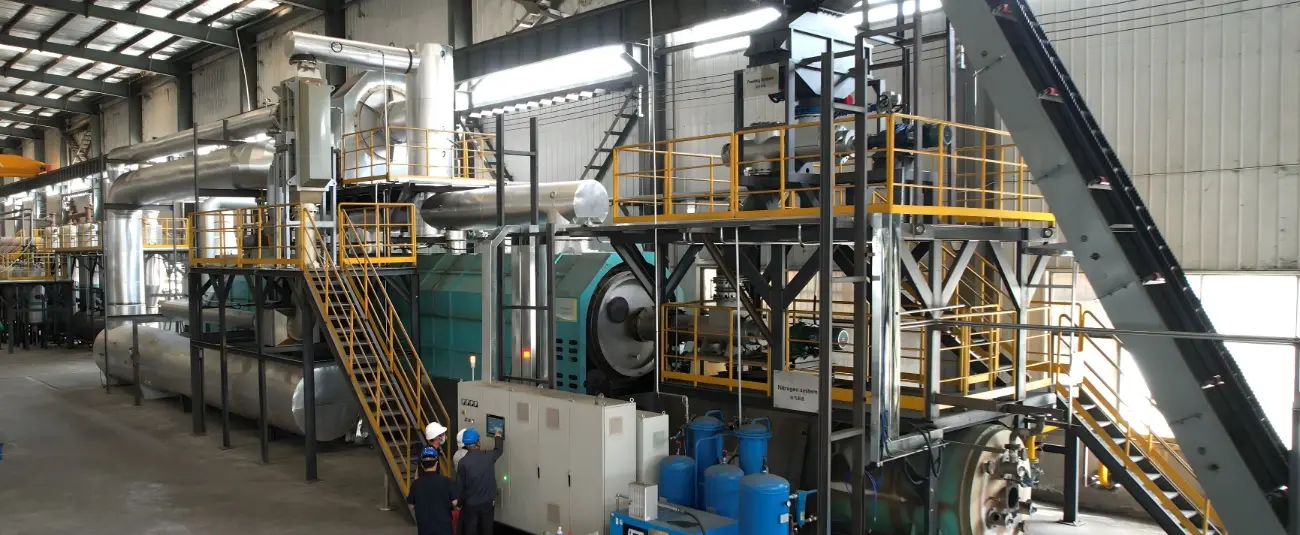Continuous pyrolysis represents a critical leap forward in the industrial conversion of polymeric waste into valuable resources. Unlike batch-type systems that operate intermittently, a continuous pyrolysis plant functions under a steady-state regime, ensuring uninterrupted feedstock input and consistent product output. This configuration enables a higher degree of thermal efficiency, reduced manpower dependency, and superior product uniformity—factors that have positioned it as the preferred solution for large-scale waste-to-energy projects.

Process Stability and Thermal Efficiency
The operational stability of continuous plastic pyrolysis machine is anchored in its steady thermal management. The system maintains an optimized temperature range—typically between 450°C and 600°C—across the entire reactor, avoiding fluctuations that can compromise product quality. The heat distribution is managed through indirect heating mechanisms, minimizing thermal shocks and allowing a controlled decomposition of long-chain hydrocarbons.
This steady-state operation significantly enhances energy utilization. The non-condensable gases generated during pyrolysis are recycled as a secondary heat source, reducing external fuel requirements. The result is a self-sustaining process where energy recovery efficiency often exceeds 85%, marking a substantial improvement over traditional batch configurations.
Scalability and Automation
A continuous plastic to fuel machine is inherently designed for scalability. The system can accommodate a constant inflow of shredded plastic waste via automated feeding conveyors, while the solid residues—such as carbon black or char—are continuously discharged through airlock mechanisms. The modular design allows operators to expand processing capacity by integrating parallel reactor lines without halting production.
Automation plays a pivotal role in maintaining process precision. Programmable logic controllers (PLC) govern temperature, pressure, and feed rate parameters, minimizing human intervention. This digital supervision not only ensures repeatability but also mitigates operational risk, particularly in high-temperature environments where manual adjustments could be hazardous or inconsistent.
Product Consistency and Quality
Continuous plastic to oil machine yields products with higher consistency in both composition and calorific value. The liquid oil fraction—commonly referred to as pyrolysis oil—exhibits a narrow boiling range and reduced impurity content, making it more suitable for downstream refining or energy recovery. Gas output remains stable, enabling predictable calorific performance for use as a clean combustion fuel or for power generation.
Solid char by-products demonstrate improved carbon density and reduced volatile matter compared with batch processes. These characteristics expand their applicability in various industrial sectors, including construction material manufacturing and metallurgical operations. The uniform product profile is particularly advantageous for companies pursuing certification or compliance with fuel and material standards.
Environmental Performance and Resource Recovery
Continuous pyrolysis technology addresses multiple environmental challenges associated with plastic waste accumulation and fossil fuel dependency. By transforming heterogeneous plastic streams into reusable hydrocarbons, the process effectively diverts significant volumes of waste from landfills and incinerators. The closed-loop design prevents fugitive emissions, with advanced gas scrubbing systems capturing volatile organic compounds and acid gases before release.
Moreover, the energy recovered from the process substitutes conventional fossil-derived inputs, lowering the overall carbon footprint of industrial operations. The char residue, when properly treated, can even be utilized for carbon sequestration or as a soil amendment, contributing to broader circular economy objectives. Get your plastic recycling pyrolysis solution, please contact Beston Group
Industrial Adoption and Future Outlook
The integration of continuous pyrolysis systems into municipal and private-sector waste management frameworks has accelerated as environmental regulations tighten and resource recovery targets rise. Modern pyrolysis plant installations combine robust mechanical design with advanced control algorithms, enabling year-round operation under varying feedstock compositions.
Future developments are expected to focus on catalytic upgrading of pyrolysis vapors, improved heat-exchanger designs, and expanded co-processing capabilities with biomass or rubber materials. These advancements will further solidify continuous pyrolysis as a cornerstone technology for sustainable hydrocarbon recovery.